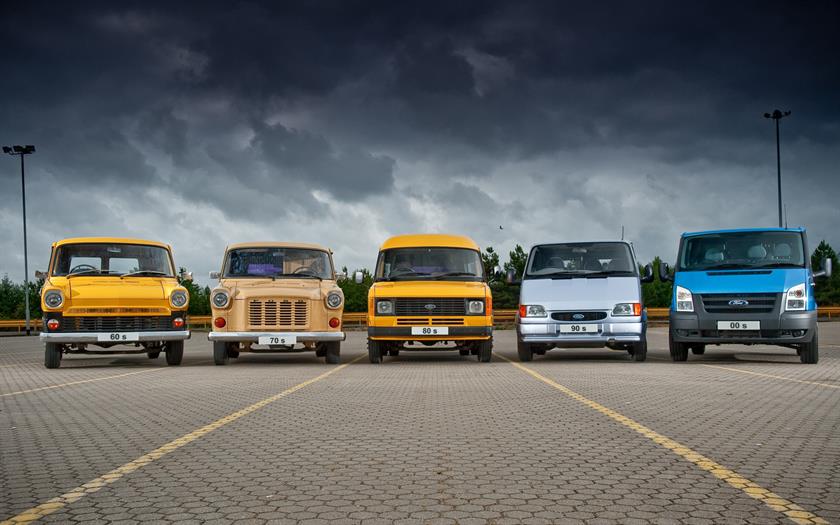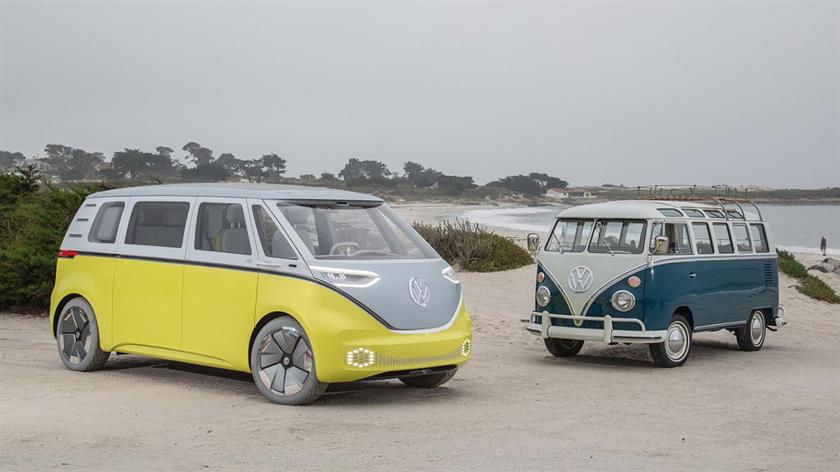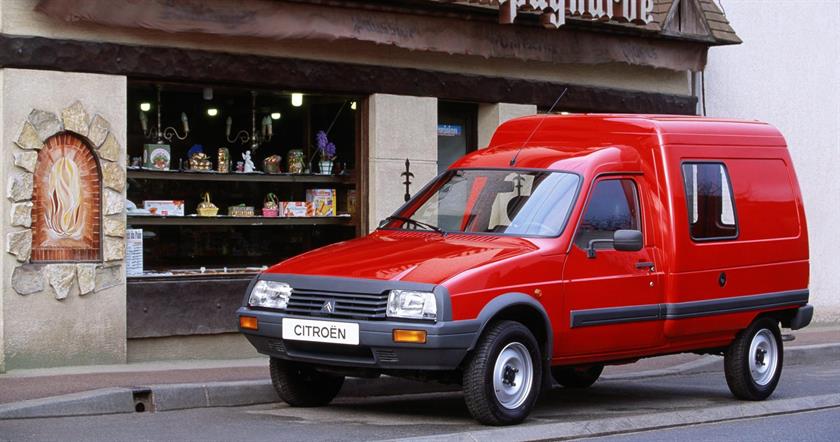Humans have always needed effective ways to transport loads of all sizes. Since the middle of the 20th century, this need has driven a real industrial revolution in the world of vans. We have seen the launch of new vehicles that are now a key part of Motoring Heritage and are still being developed to suit user demand. Here is the rich history of a few models that have become classics in Europe.
Ford Transit:it all began with a T!
Everyone knows the Ford T: it's an icon that became a global success. The TT, however, is much less known despite its considerable impact. This model launched 102 years ago as the precursor to the modern van and pickup range which now includes the Ford Transit.
The Ford TT was the first utility vehicle in the one-tonne category made by Ford. Owners could customise their chassis using a cargo bed that could transport any type of goods including post, hay or a tank. The engine was started using the cranking handle on the front of the vehicle.
The name "Transit" that we know today appeared for the first time in 1961, when the Ford FK 1000 (standing for Ford Köln 1000 kilos) — that had been produced since 1953 — became the Ford Taunus Transit. We had to wait until 1965 for the first-generation Ford Transit as is.
From the beginning, the range was enormous with six different payloads, five engines, two wheelbases, three types of bodywork (van, combi and 9-, 12- or 15-seat minibus), then the flatbed and chassis cab versions, and finally eighteen door combinations (side swing-out or sliding doors front and back; a rear tailgate or two rear swing-out doors).
Five generations later,
the Ford Transit is still the most-sold van in Europe. The name has resonated so well on the market that it has inspired all the manufacturer's vans: Transit Courier, Transit Connect, Transit Custom and Transit 2T... These different versions have won International Van of the Year five times between them since 2001.

Volkswagen: from Bulli to ID. Buzz...
In 1947, Ben Pon drew the first sketch of the iconic
Volkswagen Transporter. Affectionately known as Bulli in Germany and Combi in France, it went into production in 1950. However, it came within a hair's breadth of not seeing the light of day. Its creator found the initial designs were rejected because the Ministry of Transport thought that a vehicle with a loading area at the front and a driver's seat at the back was unsuitable for public roads.
Pon then reversed his concept and in 1947 sketched this first ever small van in his notebook. Eleven million of these have been sold in the subsequent seventy years across six generations.
The Combi spirit continued on in the next models that came out (T2 and T3) in the 70s and 80s. These again adopted air-cooled engines at the rear. The Transporter was given a few updates, like disc brakes (T2), optional all-wheel drive (T3) and an improved (but heavier) chassis.
It wasn't until the 90s that VW radically changed the original style, allowing the Transporter to reach its full potential. The manufacturer decided to equip the vehicle with a water-cooled engine and install it at the front: a design that hasn't changed much over the twenty-five subsequent years.
In 1992, the T4 was the first to be awarded International Van of the Year. The T5 did it again in 2004, as did the T6 in 2016.
And what does the future look like for our hero of the day? Volkswagen has now confirmed that the electric ID. Buzz concept van is in production. This model's exterior is similar to that of the first Transporter in many ways. The ID. Buzz's electric engine is sure to please hippies - the same audience who were behind the Combi's success in its early days. In other words, at the age of 70, the Combi is about to enjoy a second childhood.
While we wait for this comical/ancestral vehicle to be produced, the Transporter has gone electric. The e-Transporter is now on the market.

Citroën: from the AC4, via the 2CV mini-van, to the Berlingo
Citroën launched the 10 HP AC4 at the Paris Motor Show in autumn 1928. The name AC4 stood for André Citroën four-cylinder as it had a four-cylinder inline engine installed lengthways at the front. This vehicle — which would be known as the C4 — had rear-wheel drive. Front-wheel drive arrived much later. This AC4/C4 wasn't a true mini-van, but a car that could be used for a range of utility purposes, unlike a van or lorry.
In 1951, the 2CV mini-van appeared. A contemporary of the Citroën Type H, it was produced until 1977. Powered by the family 2CV's boxer engine, it was above all the first mini-van to be worthy of the name. Around 650,000 were made, plus 600,000 of the AK series which arrived in 1963 with the Ami 6 engine and a 350 kg payload.
The 2CV mini-van made way for the Citroën Acadiane and its relatively low production levels (250,000 vehicles), before the arrival of the essential C15 (for Citroën maximum loaded weight of 1.5 tonnes), now much missed on the countryside for its ability to go anywhere thanks to its high ground clearance.
The whole of the Citroën C15's front was based on the Visa. It first came out in a petrol version: the C15 E petrol. The C15 D diesel arrived soon after with the 205 diesel engine. The 205's front-wheel axle unit was also integrated and required plastic front fender flares. The C15 bowed out in 2006, having enjoyed a 22-year career since 1984.
There was such a demand for the C15 that it existed alongside the
Berlingo for ten years. The latter arrived on the market in July 1996, is now in its third generation and also owes its success to its leisure-activity-vehicle version.
